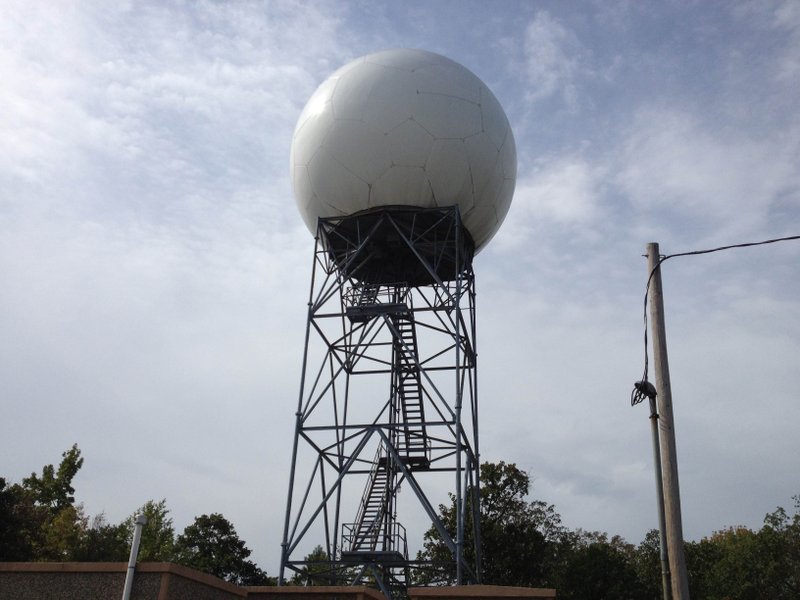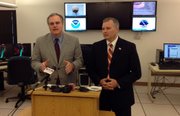NORTH LITTLE ROCK — U.S. Rep. Tim Griffin and U.S. Sen. Mark Pryor joined officials from the National Weather Service in North Little Rock on Wednesday to dedicate new technological upgrades to the agency's Doppler radar that will result in improved forecasts for the region.
Officials at the event say the dual-polarization radar has the potential to save lives by offering increased lead-time for dangerous storms like tornadoes.
"We live and die with information," said David Maxwell, the director of the Arkansas Department of Emergency Management and Homeland Security. "The better information we can get, the better we can serve the citizens of Arkansas."
Griffin and Pryor applauded the improvement that cost about $225,000.
Griffin said the upgrades could garner "big savings" if the increased accuracy from the radar results in better preparation ahead of a damaging storm.
"We all know that severe weather is deadly," Griffin said. "It's that simple. ... It affects the whole state."
The improvements to the radar, which sits atop a four-story tower across the street from the weather service office by the North Little Rock Airport, include new software and hardware that allows for higher resolution images. That means it can be used to confirm tornadoes, even at night, based on debris clouds or detect icing conditions or birds that might be hazardous to aircraft, Pryor's office said.
Margaret Spring, principal deputy undersecretary the National Oceanic and Atmospheric Administration, said during the dedication that identical technology has already paid dividends in other places. She said a dual-polarization radar in Springfield got an early detection of a tornado that was headed for Branson.
"They got word to Branson 25 minutes before the tornado arrived, which is double the national average," she said.
Little Rock's weather service office serves more than 1.5 million people in 45 counties.
Read more in tomorrow's Arkansas Democrat-Gazette.

